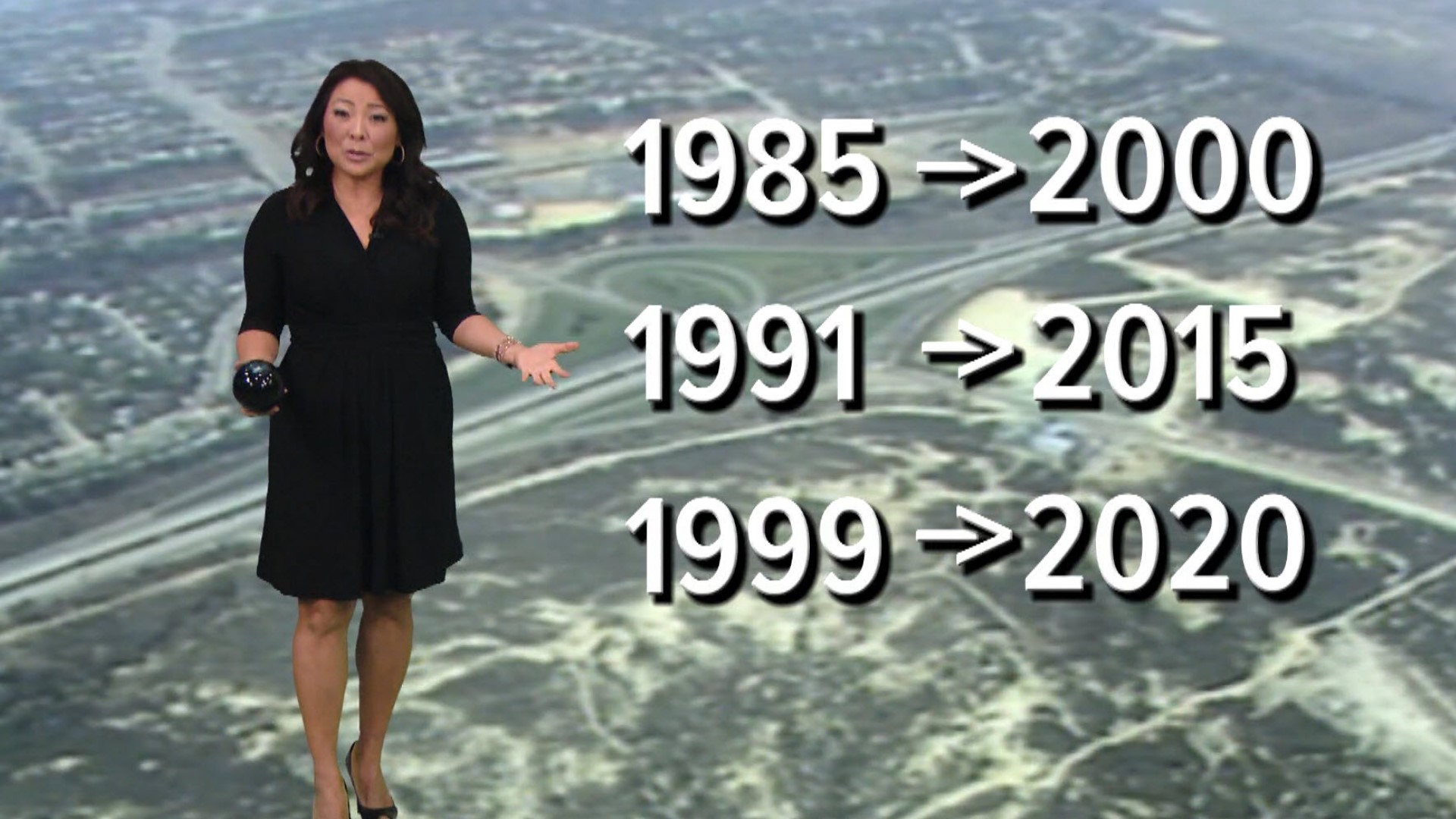SAN DIEGO — Since the beginning of humankind, people have been trying to predict the future, relying on horoscopes, crystal balls, tarot cards, the Magic 8 Ball and many other methods.
Here at CBS 8, we uncovered stories from decades ago in our archives, with predictions for San Diego's future, and we wanted to know if the fortune tellers we know as SANDAG got it right or wrong.
In 1985, nearly 40 years ago, rush hour traffic on San Diego freeways spanned eight miles. The San Diego Association of Governments, known as SANDAG, measured traffic jams in miles.
Marney Cox, SANDAG's chief economist at the time, was looking 15 years down the road. In 1985, Cox said, "The studies show by the year 2000, that if we do not build any more freeways, that will be an excess of 100 to 125 miles of freeway traffic jams."
In 1991, SANDAG was bracing for an explosive population growth of 58%, predicting nearly four million people would be living in San Diego by the year 2015.
That didn't happen.
SANDAG's current Chief Economist Ray Major explained, "When the earlier forecasts were done, we were adding about 42,000 people per year... but in later years, we were growing at a rate of about 24,000 people per year, so it had significantly slowed."
Major said watching our News 8 Throwback stories was absolutely fascinating.
"I was surprised at how accurate some of them were, and was very interested in understanding why the ones that were off, the reasons for that," he said.
He says Marney Cox's predictions in 1985 for the year 2000 were spot on.
"He talked about a lot of people coming to San Diego, a million people plus, and that we were going to need to build lots of roads and freeways. Those are all things that actually came true. So, to me, what was interesting is that forecast was off by less than four percent," Major reflected.
He said new freeways helped ease congestion. "We built the 52, the 56, the 125, the 15 managed lanes, we widened the five, we added the 905. So we did build freeways-- that was what he said was going to happen."
Major also said there were factors that couldn't have been predicted..
"For instance, during that forecast, there was the dot com bubble. We also had the Great Recession occur," Major explained.
We found a story in our archives from 1999 with predictions for the year 2020. Some experts were predicting that a 4 bedroom, 2 bath house in San Diego priced at $300,000 in 1999, could sell for $500,000 in 2020. Experts were trying to figure out a plan to also have $200,000 and $100,000 houses available as well in the year 2020.
We all know that's certainly not what we got in 2020, when we saw the median home price in San Diego reach more than $730,000 dollars during the COVID-19 pandemic.
In 1999, city planners also talked about "smart growth"-- don't build out, build up. That plan remains the same today in 2022.
"What we're going to see is densification, and communities growing up and not out," said Major.
SANDAG is now predicting out to 2060, and one big change is the way San Diego's population is expected to evolve.
"We're no longer predicting population in San Diego to grow," Major said. "We only expect the population to grow by .07%, which is about 5,000 people a year."
Major said one reason is that it's very expensive to retire here in San Diego.
Looking ahead, Major said they are using new metrics. When it comes to traffic, they no longer measure congestion in miles. He said the new mandate from the state calls for reducing greenhouse gases and vehicle miles traveled, with the goal of combatting climate change.
He said when they do these forecasts, they don't take into account some some of the external shocks that you can't predict, like the smart phone, which revolutionized the way we live.
"I think that's going to be the most surprising thing -- how technology fundamentally changes the way that we live in San Diego, because we don't know what we don't know," Major said.
No one knows where things like autonomous vehicles, drones, and artificial intelligence will take us over the next 40 years.
"We will all be loaded up into the metaverse and we will just have this conversation there," predicted Major.

